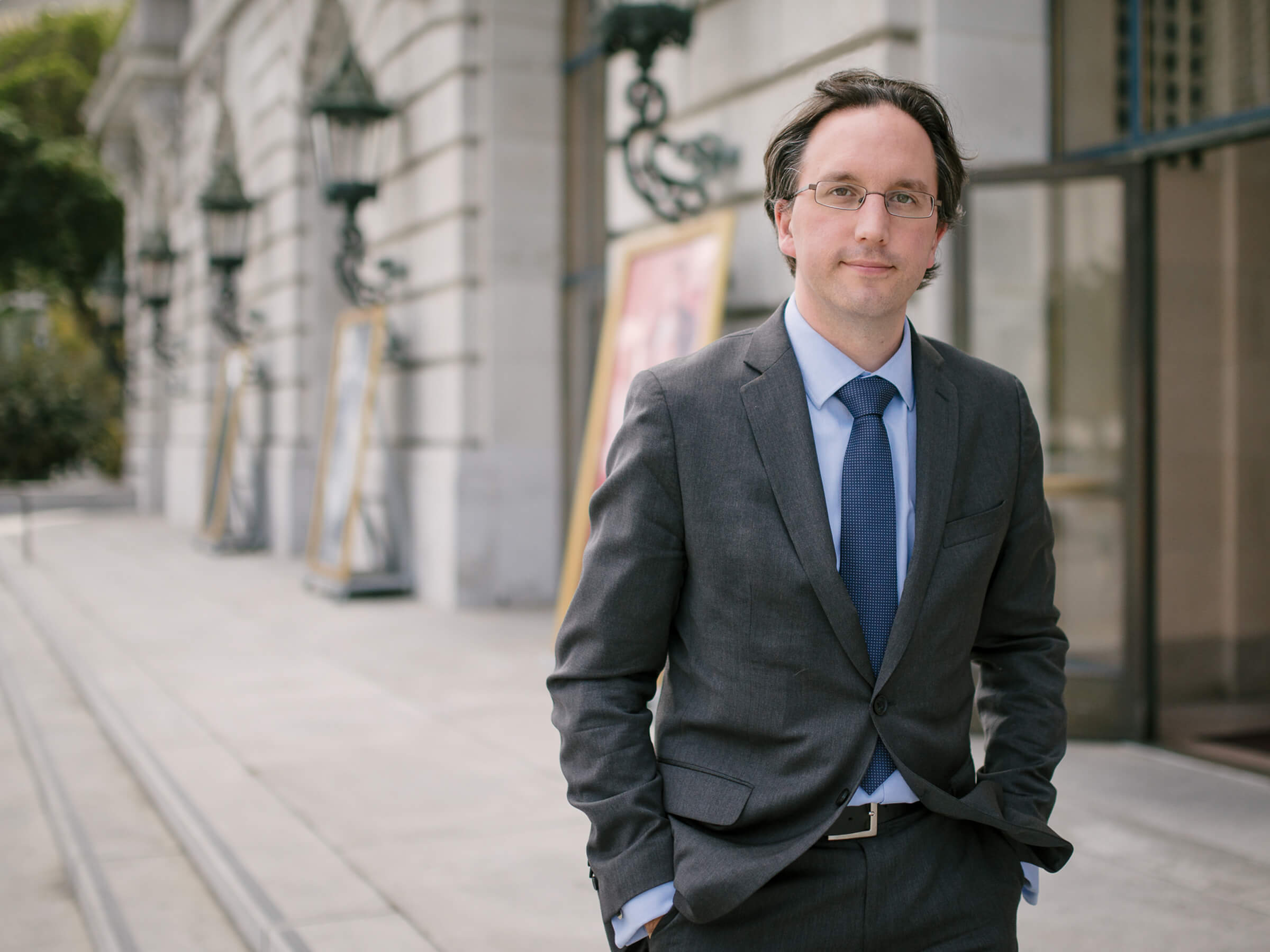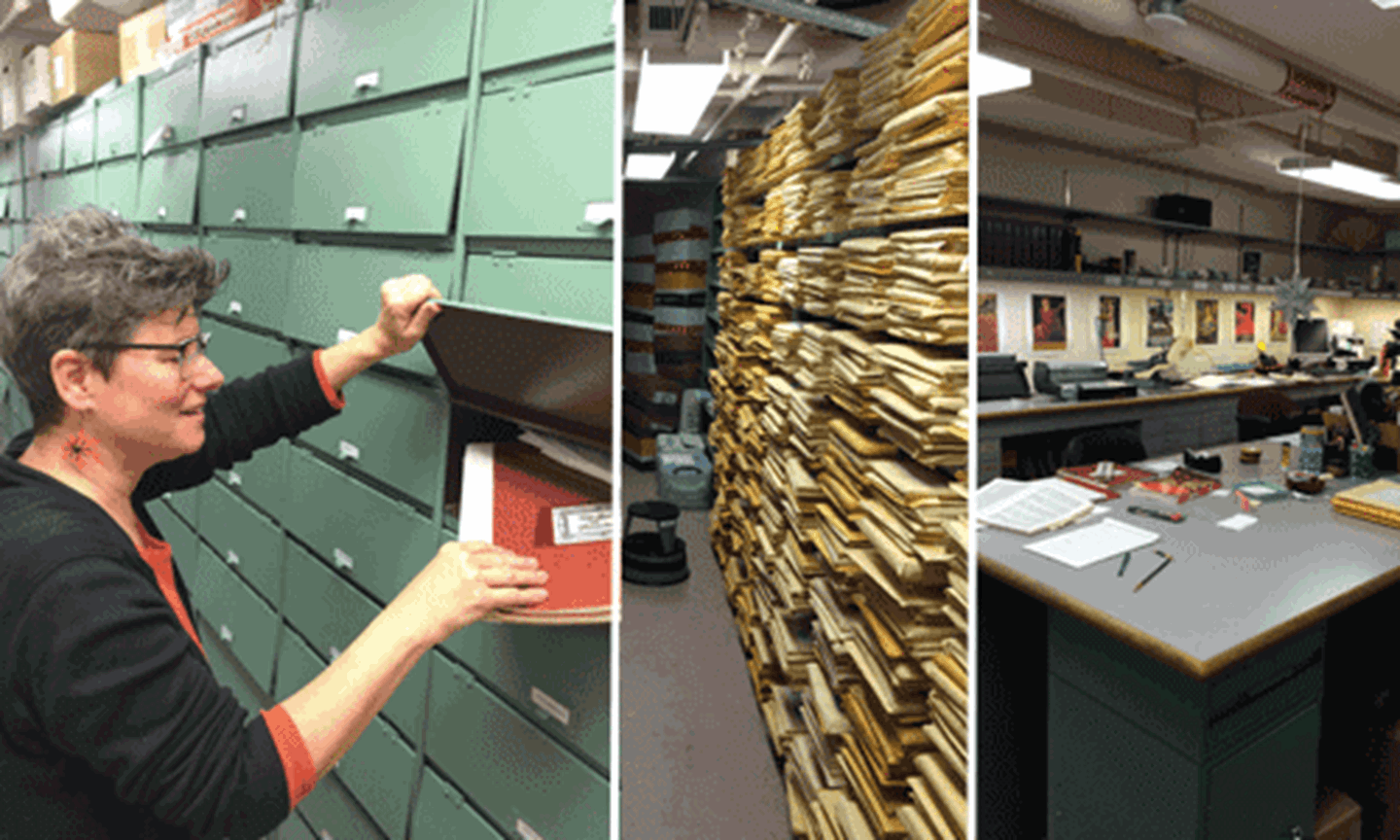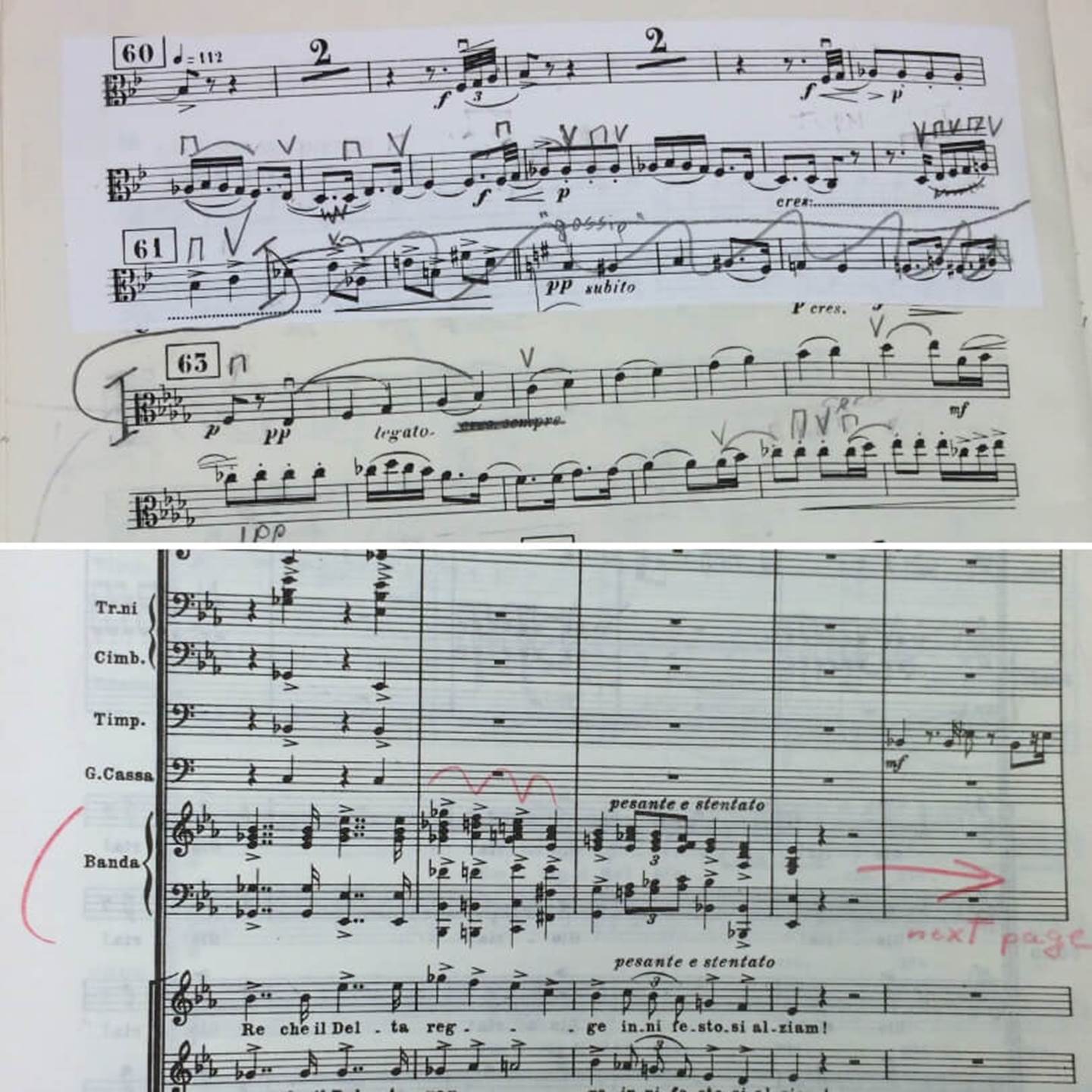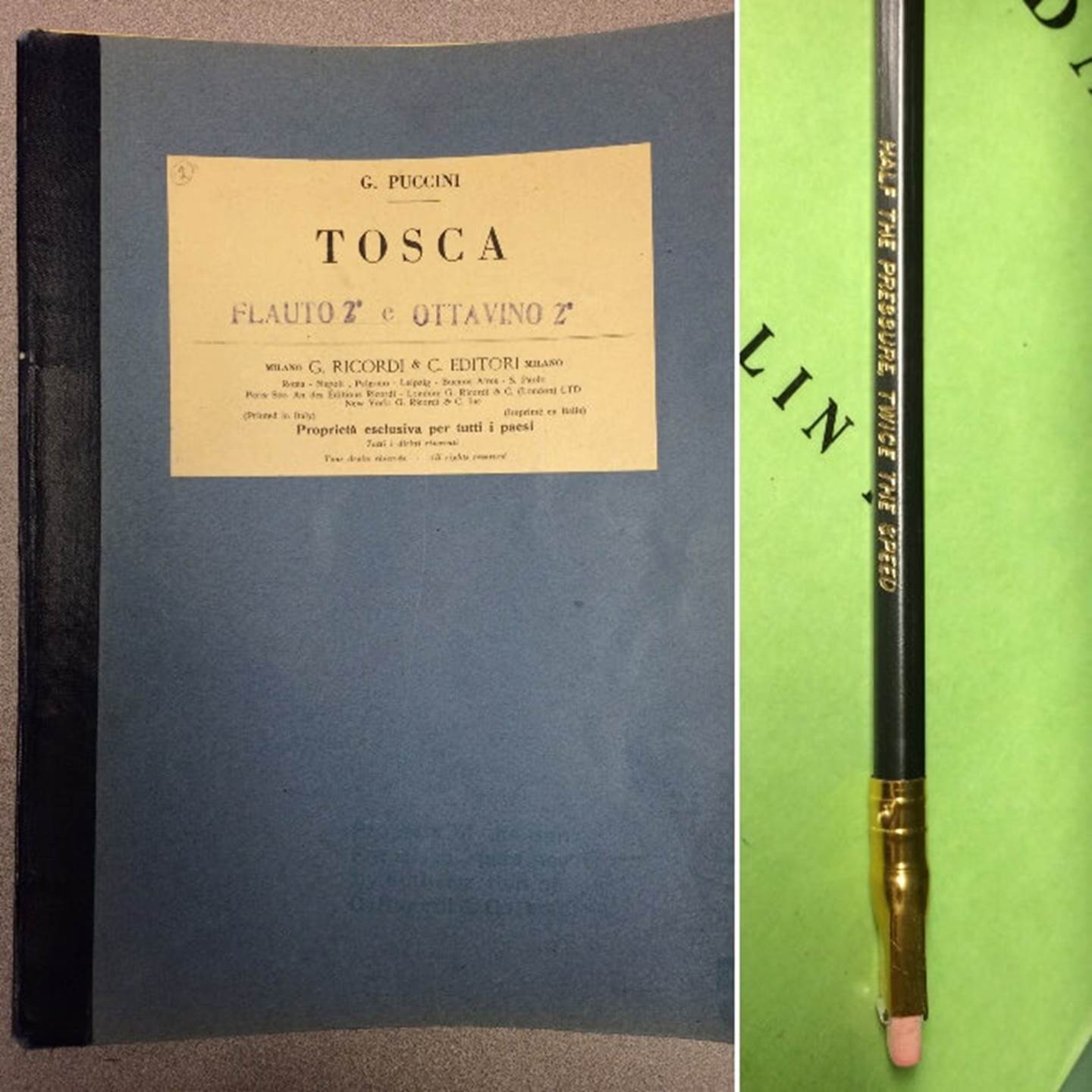Backstage with Matthew - November 3

The musical score is the central source for so much of what we do and it is critical that everyone is on the same page, whether they are playing in the pit, singing on stage, stage managing the opera, or working out technical issues.
Now you might ask: isn’t the music the music? Don’t we just play what Verdi or Puccini wrote? Well, yes and no. Particularly before the 20th century, operas were much more flexible and organic than we would consider today. Baroque and classical composers (like Handel and Mozart) were always changing arias, expanding sections, cutting others. But even romantic composers would morph and adjust as they went: Madame Butterfly went through five major revisions between its opening in 1904 and the version we know now.
There are a number of other factors that Carrie considers as she prepares the music for use:
- What inconsistencies need to be corrected in the published music?
Even once you’ve decided which version you’re doing, you have to check in detail the piano reduction (as used by singers), the individual parts (as used by the orchestra), and the full score (as used by the conductor). It’s not uncommon for there to be inconsistencies between published parts.
- What cuts are we doing?
In addition to different versions, it’s not uncommon to have various cuts in the music. Some of these are standard traditions. Some stem from the particular approach of a conductor or director. And others come from the company’s logistical needs. A negotiation process happens between company, conductor and director to determine the cuts.
- What bowings are we doing?
Some conductors get heavily involved in bowings (the indications of how a string player uses their bow to create articulation). Others leave that to the concertmaster (the leader of the orchestra), Kay Stern.
- What is the approach to the stage music?
We internally call this “the banda” and it means any instrumental music performed backstage or onstage. This is where the conductors and librarians can really have some fun! Bandas are very flexible, particularly in Verdi. With only two exceptions, Verdi wrote his bandas just for piano and it was then up to the local company to use whatever resources they had (often the town band). There is no set instrumentation, and librarians are often called upon to orchestrate these sections.
The amount of work to prepare the music depends on whether the conductor has done the opera before with the company. Nicola Luisotti has already conducted Aida at SFO, so Carrie just needs to make small refinements. But, for a piece like Andrea Chénier, conducted by Nicola for the first time here in September, our resident conductor Jordi Bernàcer began working with Carrie and our Music Planning Manager, DeAnna Sherer back in March through issues of editions, cuts, etc. The string principals then work out the bowings, and the librarian then has to input the details into every part, a process that can take up to a month.
As well as the musical tools of her trade (Carrie is an accomplished pianist and horn player as well as a music theory major and a trained violinist), Carrie has her preferred physical tools. The paper quality and the pencils are critical. Our Tosca orchestral parts are about 70 years old and have a rag content so dense that you can erase and write on them forever. The ideal pencil? A Blackwing pencil that disappeared from circulation in 1998 and were so sought after by librarians that they were going for $75 per pencil (!) until a new company started making them recently.
Carrie’s favorite part of the job? Being able to prepare a new set of parts from scratch. Those 70 year-old Tosca parts are coming to the end of their life and she’s itching to start work on a new set!
Carrie plays a critical role in ensuring that every minute of rehearsal time is used for music making. With consummate skill, experience, and musical knowledge, every piece of music that appears in the pit is readied for use in complete synchronization with the maestro’s intent.
###
PS. If you’ve not yet seen it, please enjoy this video interview between me and RETNA, the graffiti artist who has designed our new Aida, opening Saturday!




